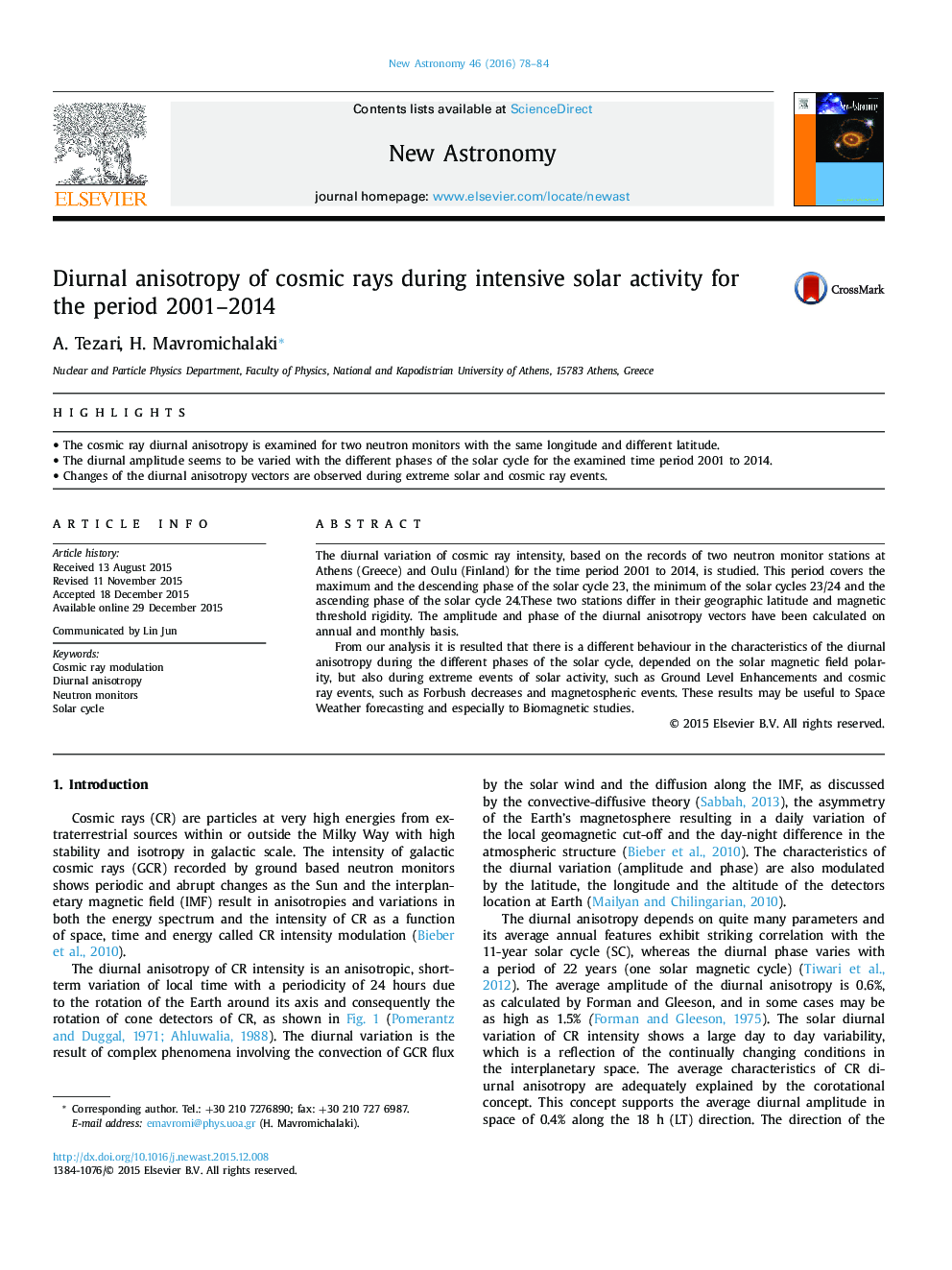| Article ID | Journal | Published Year | Pages | File Type |
|---|---|---|---|---|
| 1778789 | New Astronomy | 2016 | 7 Pages |
•The cosmic ray diurnal anisotropy is examined for two neutron monitors with the same longitude and different latitude.•The diurnal amplitude seems to be varied with the different phases of the solar cycle for the examined time period 2001 to 2014.•Changes of the diurnal anisotropy vectors are observed during extreme solar and cosmic ray events.
The diurnal variation of cosmic ray intensity, based on the records of two neutron monitor stations at Athens (Greece) and Oulu (Finland) for the time period 2001 to 2014, is studied. This period covers the maximum and the descending phase of the solar cycle 23, the minimum of the solar cycles 23/24 and the ascending phase of the solar cycle 24.These two stations differ in their geographic latitude and magnetic threshold rigidity. The amplitude and phase of the diurnal anisotropy vectors have been calculated on annual and monthly basis.From our analysis it is resulted that there is a different behaviour in the characteristics of the diurnal anisotropy during the different phases of the solar cycle, depended on the solar magnetic field polarity, but also during extreme events of solar activity, such as Ground Level Enhancements and cosmic ray events, such as Forbush decreases and magnetospheric events. These results may be useful to Space Weather forecasting and especially to Biomagnetic studies.
